I am thinking back now to one of my favourite horror films of the 1950s and this one was a British Picture. ‘Fiend Without a Face’ 1958 originally had a budget of £ 50,000 but this stretched to £80,000 by the time they had finished with extra special effects – quite a meagre amount even by the standards of those days
It starred among others Kynaston Reeves – who was famous as playing Quelch the Headmaster in Billy Bunter of BBC Television just before this film was made.
Kynaston Reeves had played one of his notable acting parts on television, namely that of Henry Quelch, form master to the ‘Fat Owl of the Remove‘, Billy Bunter, in the long–running television series Billy Bunter of Greyfriars School. He was actually in only 16 episodes between 1952 and 1957 but somehow he is best remembered as Quelch – it was his most famous role even though he had one of the leading roles in ‘Fiend Without a Face’ in 1958 and later in the Sixties in ‘The Forsyte Saga’
Billy Bunter played by Gerald Campion – He was actually 29 when he played the part and almost 40 by the time the series ended. He did become type cast and was forever remembered for this role. He did later play Mr Toad but in many ways it was a similar character wnyway
ABOVE: Producer Joy Harington – This was a name that was on our BBC screens throughout the Fifties and beyond because she produced so many top shows quite often for children but of course watched by everyone.
In those days we had a weekly 6 part serial very often – and I can think of a number she produced – Kidnapped with Patrick Troughton as Alan Brech in 1952 – then again in 1957 with Patrick Troughton playing the same role with a different set of actors. In between came ‘Robin Hood’ again with Patrick Troughton – I remember it and to my mind he did not fit the role well. Maybe that was because we still had Richard Todd in our minds as Robin from the 1952 film – and later came Richard Greene in the ITV series.
A distinguished producer of early children’s television programmes, Joy Harington had started as an actress (her first professional appearance had been in 1933) and had appeared in various repertory companies. In 1938 she travelled to the US and continued touring on stage before going to Hollywood to work at Paramount Studios as a script editor and dialogue director.
During her Hollywood stint she also appeared in 13 films (often uncredited), including the MGM productions of Gaslight (d. George Cukor, 1944) and National Velvet (d. Clarence Brown, 1945). (Some information sources for this period give her name as Joy Harrington.)
Back in London after the war, Harington joined the BBC as a stage manager when the television service re-opened in 1946. She became producer of BBC Children’s Television in 1950 and for the next ten years excelled in productions of children’s classics such as Treasure Island (BBC, 1951), Kidnapped (BBC, 1952; restaged 1956), Jo’s Boys (BBC, 1959) and Heidi (BBC, 1959).
One of her more light-hearted projects during this period was in bringing the Frank Richards stories of Billy Bunter of Greyfriars School (BBC, 1952-61) to television. These prankish schoolboy yarns – a kind of early sitcom for children – were broadcast live and were the first TV episodes to be presented with matinee and evening performances on the same day. Contemporary critics were at first wary of a television translation that was based on 40-year-old stories (Richards had started writing the Bunter stories in 1908) intended for readers in a less sophisticated time. But with the venerable Richards himself providing many of the scripts, the series soon became a confirmed favourite with junior school-aged children.
But perhaps what is considered her most notable work for television was the eight-part Sunday serial Jesus of Nazareth (BBC, 1956) for which she received the 1956 award of the Guild of Television Producers and Directors (now BAFTA), the first to be presented for a children’s serial. A live studio production with exteriors filmed on location in Galilee and Jerusalem, it was a courageous undertaking. At that time, censorship regulations prohibited the portrayal of Christ by an actor in public performances. However, the Central Religious Council approved the project and Tom Fleming was cast as Jesus Christ. The serial was an outstanding success. Harington followed with a similar ten-part series, Paul of Tarsus (BBC, 1960), for which the exteriors were filmed mainly in Crete.
Until her retirement from the BBC in 1970, Harington worked for religious programmes, schools and further education. She returned to acting in the late 1970s and appeared regularly in the Sykes series (BBC, 1960-65; 1971-79) as well as the occasional Are You Being Served? (BBC, 1973-83) episode and in the fourth Quatermass (ITV, 1979) serial.
This Picture ABOVE is one showing the BBC Studio for a ‘live’production of Billy Bunter. Just look how tight the whole thing is – to the right we have the boys in their room then behind that could be one of he school corridors – then on to the school room with a view through the window. To the left there looks to be the school garden or outside area even with small trees and shrubs. All seems to be done with two cameras.
The ABOVE photograph was taken in Studio H of the Lime Grove Studios
The ABOVE Picture shows a scene which you can see was done at the Studio On the set above towards the left of the picture in the ‘outside’ area.
It shows Headmaster Quelch played by Kynaston Reeves on the floor with Billy Bunter Gerald Campion looking on.
Billy Bunter
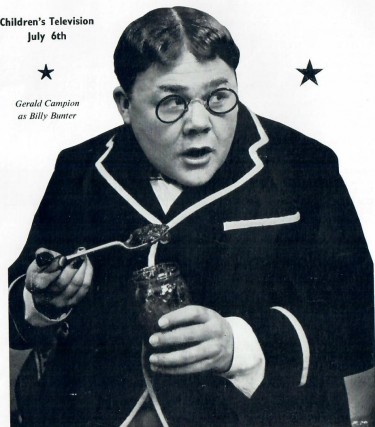
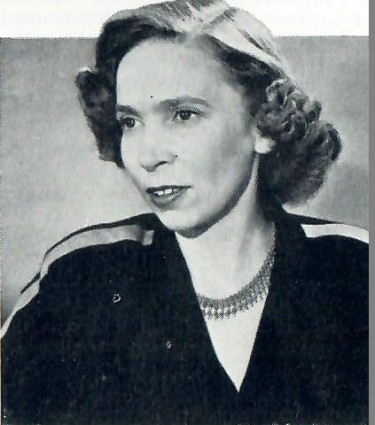
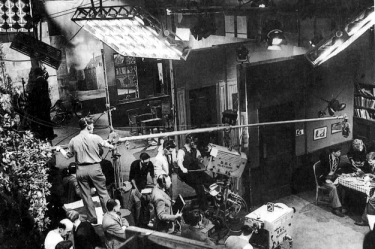
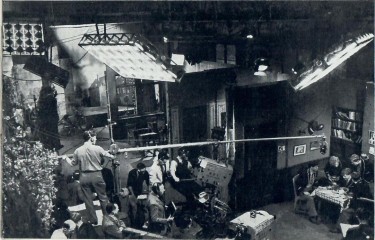
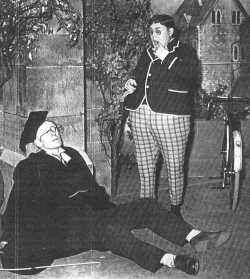
I remember Billy Bunter very well. But I don’t remember the 1959 version of ‘Heidi’, I probably didn’t see it. But I do remember the October / November, 1953 version starring 11 or 12 years old Julia Lockwood as Heidi. I was six and a half at the time. Just a memory now as nothing from the 1953 serial has survived, except perhaps some stills published in the Radio Times at that time.
Quelch was Bunter’s form master. The headmaster of Greyfriars was a Dr Locke.
… [Trackback]
[…] Here you can find 91795 more Info on that Topic: filmsofthefifties.com/kynaston-reeves-as-quelch-billy-bunter-on-bbc-television/ […]